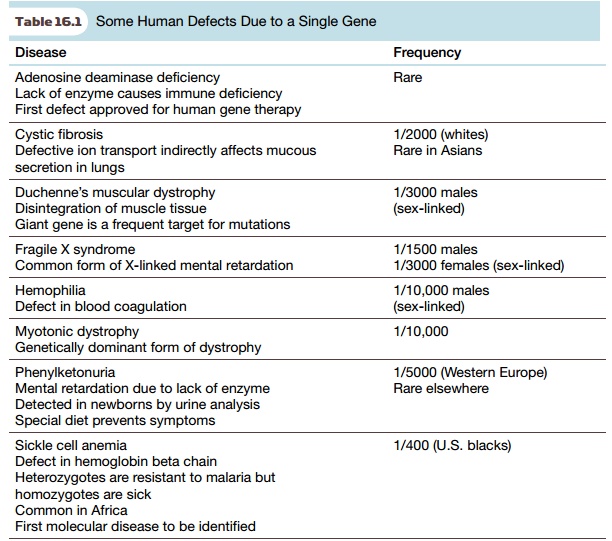Chapter: Biotechnology Applying the Genetic Revolution: Inherited Defects
Hereditary Defects Due to Multiple Genes
HEREDITARY DEFECTS DUE TO MULTIPLE GENES
Several well-known hereditary
defects are missing from Table 16.1 because they involve more than one gene.
These may be subdivided into two types. Some multigene defects are due to the
interacting effects of several individual genes. Some examples are cleft
palate, spina bifida, certain cancers, and diabetes.
Other multigene defects are
due to the presence of an extra copy of an entire chromosome. Although most
errors involving whole chromosomes are lethal, a few are viable. The best known
of these is Down syndrome, which
causes mental retardation and is due to an extra copy of chromosome 21. The
overall frequency of Down syndrome is about one in 800, but like most instances
of getting a whole extra chromosome, it is due to an accident during cell
division in the newly fertilized egg and it is not normally inherited. The
relative chances of such a mishap increase with maternal age, but even so, most
Down syndrome children are born to young women, simply because more younger
women have babies. Extra sex chromosomes are found in about one of every 1000
people; there are three relatively common possibilities: XXY, XYY, and XXX. The
XYY individuals are best known for their supposed tendencies toward violent
crime, but the others show various abnormalities also.

Related Topics